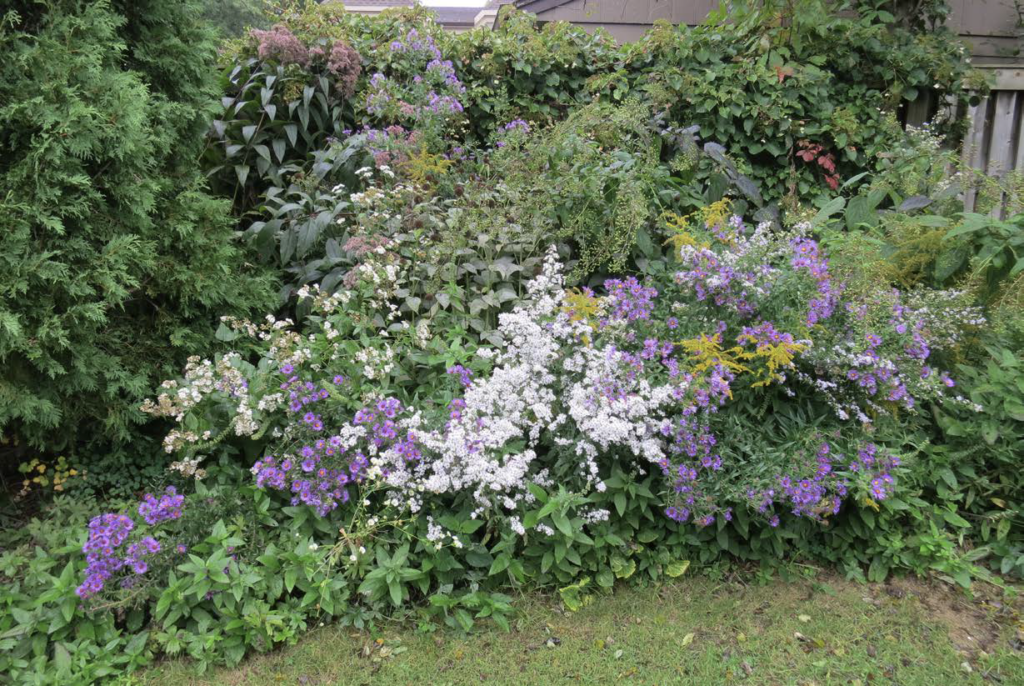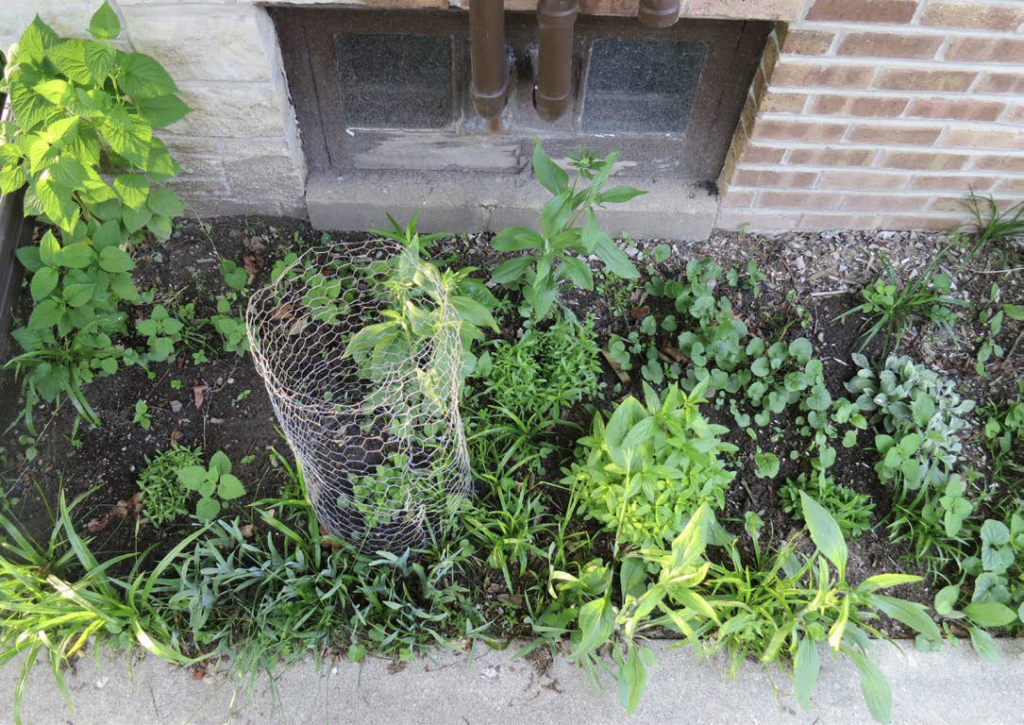In 2006, Sarah Mann had just moved back to the Milwaukee, Wisconsin area and was taking daily walks with her newborn daughter to reacquaint herself with the community and to get some needed exercise. The turnaround spot of one of her regular walks was at Big Bay Park in Whitefish Bay.
This is an excerpt from the Wild Ones Journal
Current members can log in to read the latest issue or check out the Journal Archives.
“One afternoon, as I was rounding the bend to head down to the lake, a woman in a net veiled pith hat and combat boots emerged from the forested bluff brandishing a shovel,” Mann recalls. “I couldn’t resist inquiring about her purpose.”
Wild Ones member Ney Collier, also known as Ney Tait Fraser, proclaimed her commitment to saving native plants. “So devoted was she that she adopted the park as its sole steward, eradicating invasives and promoting natives,” Mann says. “She patiently explained how essential native plants are to the environment and every creature in it.”
Immediately, Mann was sold and grateful that she finally found an approach to gardening that made sense and was more meaningful than choosing plants for purely decorative reasons.
From that moment on, Mann says she made a commitment to convert her lily laden garden to natives. Still, it was a daunting task.

“Partially because my learning curve was so steep about which native plants would be appropriate for the conditions of my garden, but also because I knew nothing about how I wanted it to look aesthetically,” Mann says. “I took some pressure off by giving myself permission to take as long as I needed to create my dream garden. It still is and probably always will be a work in progress as I learn, adjust and update.”
Mann says she is removing nonnatives as suitable native replacements come into her life. She acknowledged that there are only a handful of favorite nonnatives still permitted in her garden and says they will likely be supplanted eventually.
Collier encouraged Mann to join Wild Ones. “It was the perfect way for me to feel tapped into an incredibly wise, like-minded community that was very supportive of my new venture,” she says. “Members shared knowledge and actual plants from their gardens. A limited budget prevented me from investing heavily into my garden, but Wild Ones plant rescues were the ideal way to both save precious plants and populate my garden.”

Mann says she relied entirely on the “hit-or-miss” approach to determine what plants worked best in different areas of her landscape. Some plants flourished, others failed. Some were unwelcome spreaders.
“I realized through trial and error what works best where,” she says.
“I didn’t realize some plants needed amended soil, and those plants died. I planted extremely tall plants too close to the border and that blocked the view of my garden from my kitchen window. Those were transplanted and/or given away.”
But Mann says her gardening fine-tuning and expansion has been gratifying. “I have areas where I’ve had mental blocks with and I’m finally at the point that I have the confidence to address those areas head-on,” she said. For instance, she had vinca vine transplanted from her grandmother’s yard in her yard. “It was a remnant of a garden that my grandma treasured and I abhorred, but for the longest time, I felt like I would be letting go of my grandma by removing it,” she says, noting she finally ripped it out and took charge of that space.

Variety of ferns, sedges, violets, baneberries, bloodroots and Jack-in-the-pulpits.

One lucky bunny! Sarah Mann’s rabbit enjoys the solitude inside a pen in her backyard, which is filled with native plants.
With many activities and events canceled due to the pandemic, Mann says she devoted her free time, as well as her energy and resources, to areas in her life that give her pleasure. “And my garden is the main one. I’ve done a deeper dive into gardening and it has been profoundly satisfying.”
Mann calls herself a “puller outer” gardener since she often pulls out plants that start taking over. “My garden is quite small so I can’t afford to have things take over,” she explains.
One of her favorite plants in the garden is cupplant (Silphium perfoliatum), which was gifted to her by Lorrie Otto, a deceased Wild Ones lifetime honorary director who is known for her nationwide fight against the use of DDT. “She touted their majestic qualities and I’ve loved them ever since,” Sarah says. “Their towering sturdy stalks are sentries at my garden entrance. Their cleverly designed leaves hug the stems and act as both ladders and rain water drinking vessels for chipmunks. When the flowers finally burst open midsummer, the insect and bird activity is incessant until they fade at the end of the season.”
But the favorite sections of her garden are the shady areas filled with Jack-in-the-pulpit, trillium, ferns and wild ginger.
“It’s one of the first areas of activity in the spring with tender shoots greeting warmer, longer days,” she says. “I’ve just dotted some sedges into the mix for textural variety. Another more recently developed section is also shady but focuses more heavily on a sedge base punctuated by ferns, cardinal flowers and Solomon seal.”
The newest addition to her yard is a moss garden. “The first moss garden I visited was in Tokyo, Japan and it was so lovely, peaceful and enchanting. I’ve been in love with it ever since,” Sarah says. “Moss is this ground pillow that you can’t help but lie down on and put your cheek against.”
Mann says her moss garden includes some rock features and enough open soil to allow moss to spread. “I’m flying by the seat of my pants with this one, but I know I will learn along the way how best to make moss flourish.”

diversity of plants in her yard.
Mann says she found a moss garden in the outskirts of Milwaukee, and that’s where she accumulated little bits and pieces. “My hope is to anchor them in my garden and have them spread,” she says.
Started just this summer, the moss garden is located in shade. Mann admits it doesn’t have the most natural conditions, so she ends up watering it a lot. “We’ll see what happens,” she adds with optimism.
Her advice to those who are new to native gardening is to not be intimidated. “Don’t feel like you have to know how you’ll lay out the garden and know what plants you’ll use,” she said. “Just start small with one area putting in plants you like or rescue. Embrace your space as you would a relationship that you want to last forever. There’s no rush. Take time to nurture it, connect with it and savor it.”
Gardening with native plants is satisfying, she says, particularly when friends who are more accustomed to nonnative gardens visit her lush, abundant garden. “They always remark about how magical it is because it’s so full of color, texture and life,” she says.
Mann says creating and maintaining a native garden is an act of love. “As a gardener, I’m an instrumental part of doing the right thing by the environment and the creatures in it,” she says. “I find that tending to my garden and being surrounded by purposeful, mindful beauty is incredibly hopeful and the perfect antidote to these challenging, uncertain times.”
Written by Barbara Benish
All photos courtesy Sarah Mann

